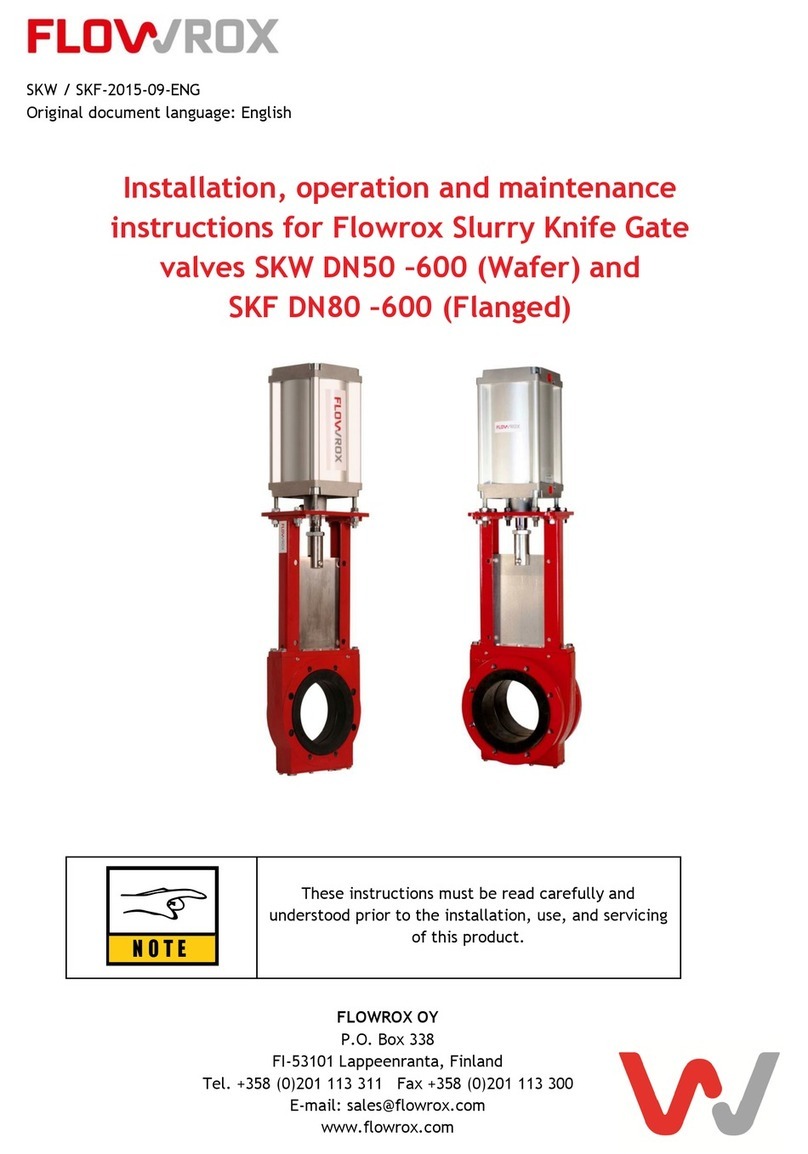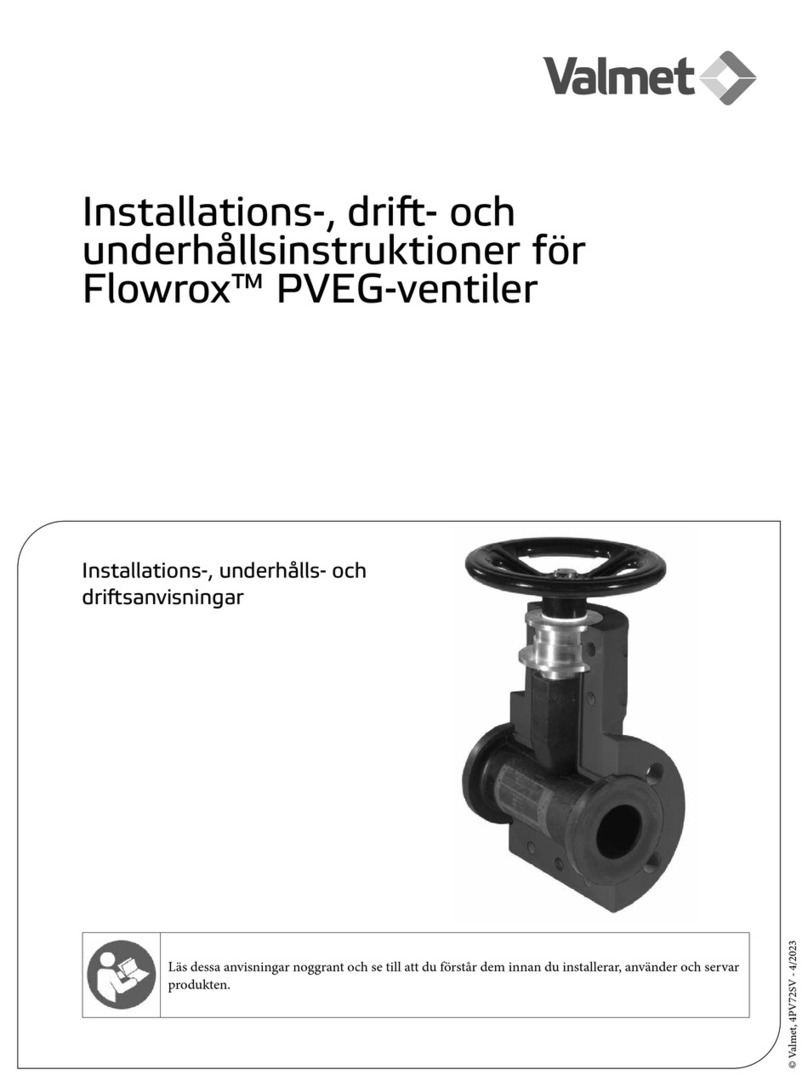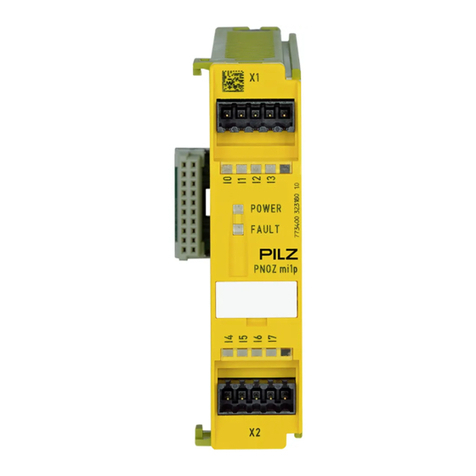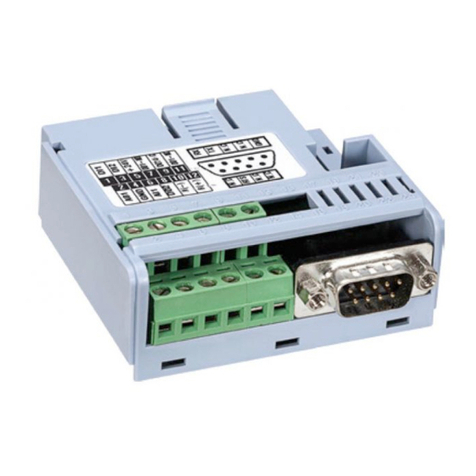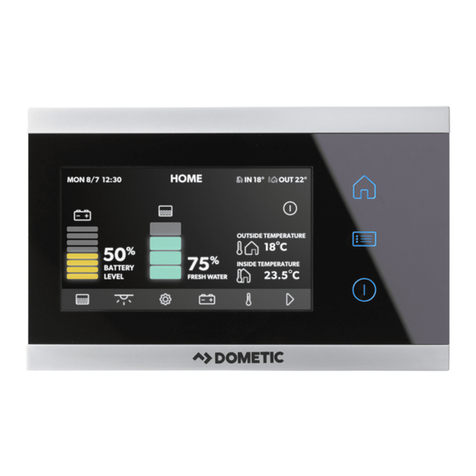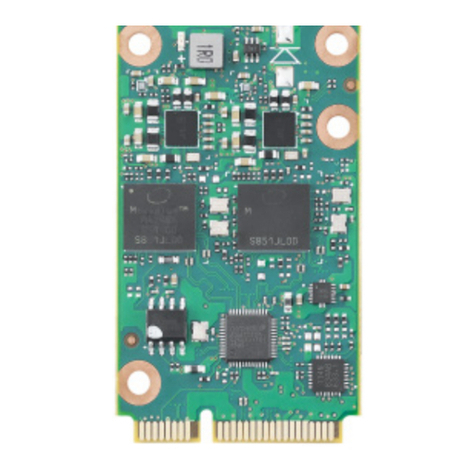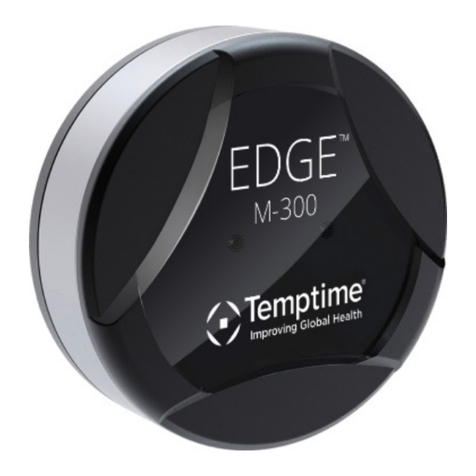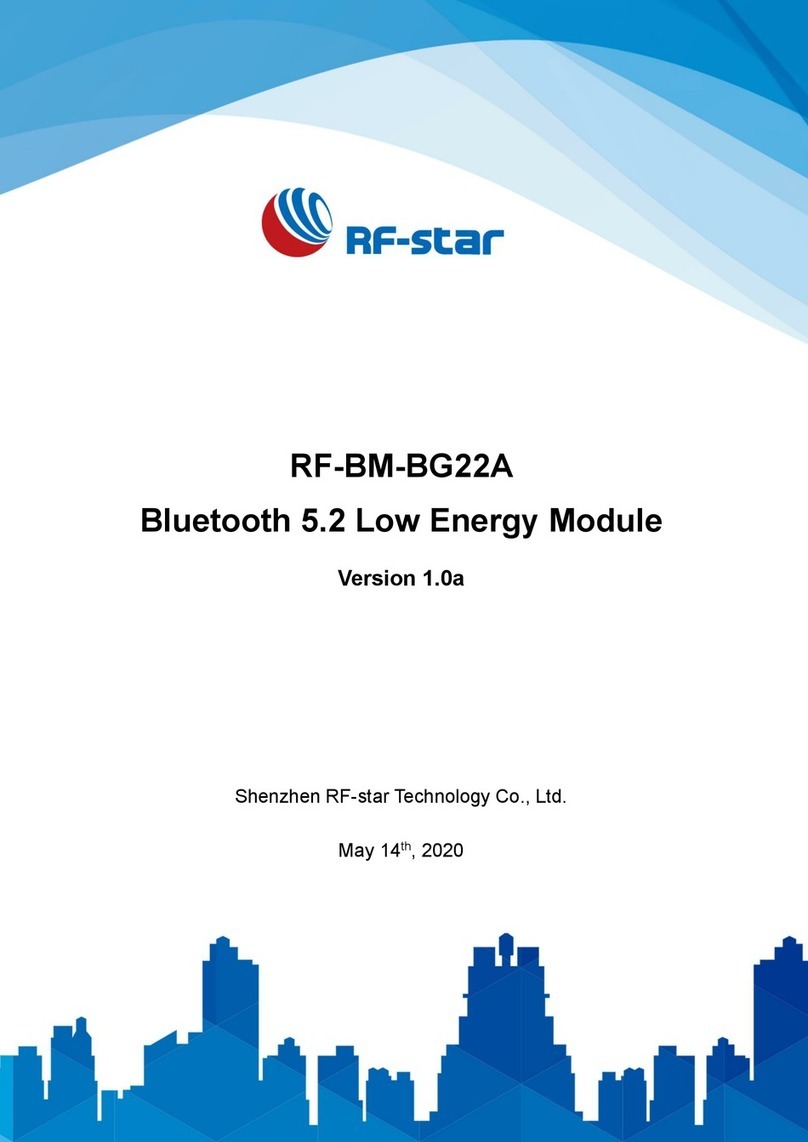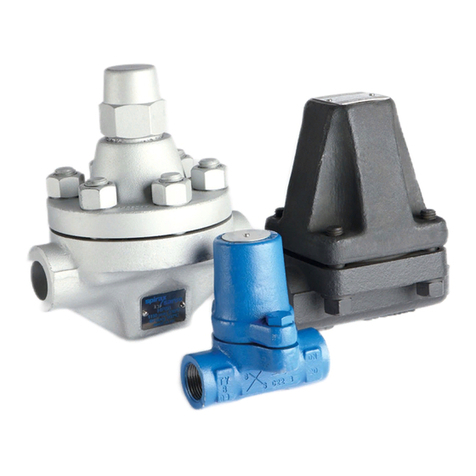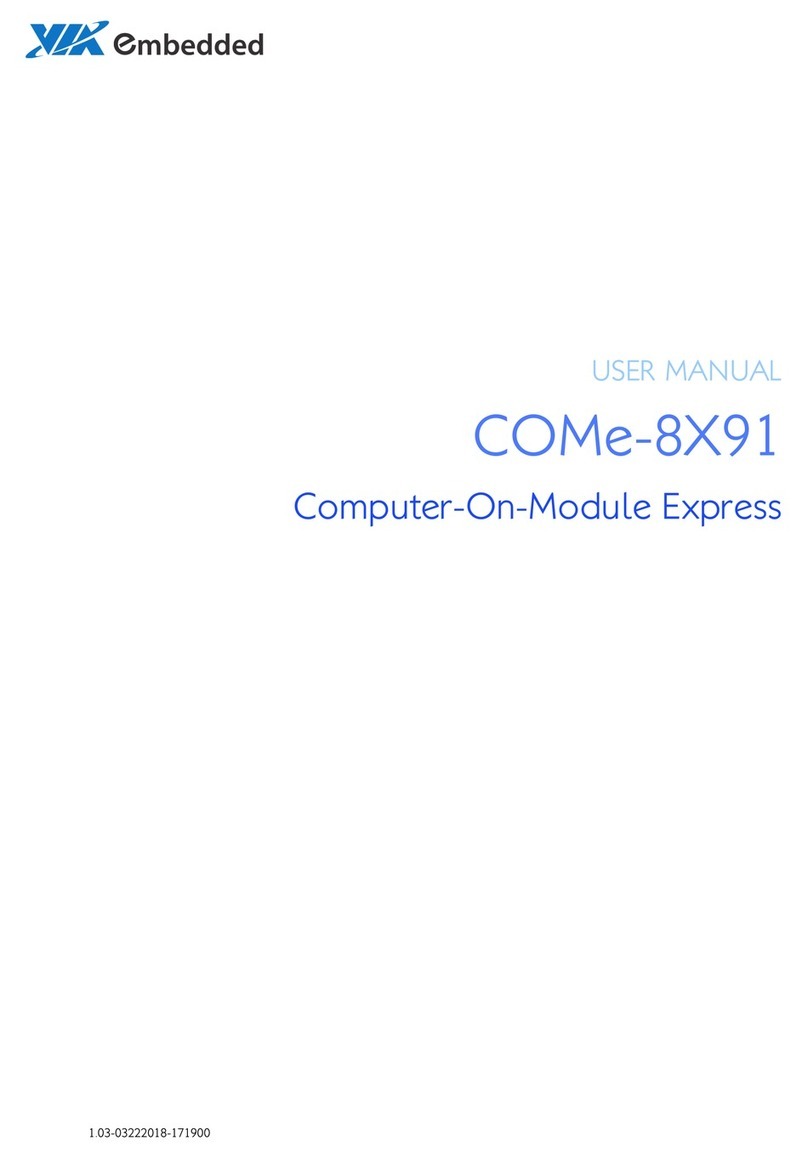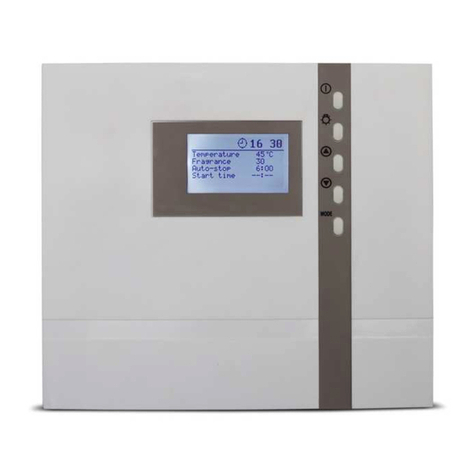FLOWROX PV 80 Manual

PVPVE-190911-EN
Installation, operation, and maintenance
instructions for Flowrox valves
Open Valve (PV) & Enclosed Valve (PVE)
NOTE
These instructions must be read carefully and understood
prior to the installation, use, and servicing of this
product.
FLOWROX OY
P.O. Box 338
FI-53101 Lappeenranta, Finland
Tel. +358 (0)201 113 311, fax +358 (0)201 113 300
Web: www.flowrox.com

TABLE OF CONTENTS
1GENERAL................................................................................. 1
1.1 General safety instructions for PV & PVE valves ................................................1
2INTRODUCTION TO DEVICE........................................................... 2
2.1 Intended use............................................................................................2
2.2 Construction of device................................................................................2
2.2.1 Open body valve PV.................................................................................3
2.2.2 Enclosed body valve PVE ...........................................................................3
2.3 Valve function..........................................................................................4
3TRANSPORTATION, STORAGE AND LIFTING....................................... 5
3.1 Receiving ................................................................................................5
3.2 Storing....................................................................................................5
3.3 Lifting ....................................................................................................5
4INSTALLATION .......................................................................... 6
4.1 Open body model (PV)................................................................................6
4.2 Enclosed body model (PVE)..........................................................................7
4.3 Both models (PV and PVE) ...........................................................................7
5OPERATION.............................................................................. 8
5.1 First use .................................................................................................8
5.2 During operation.......................................................................................8
6MAINTENANCE .......................................................................... 9
6.1 Schedule.................................................................................................9
6.2 Changing the valve sleeve ...........................................................................9
6.2.1 Changing the valve sleeve in open model valve (PV)..........................................9
6.2.2 Changing valve sleeve with enclosed model valve PVE...................................... 10
6.3 Adjusting the valve..................................................................................11
6.4 Troubleshooting......................................................................................13
7TECHNICAL DATA .....................................................................14
7.1 Model and spare part codes .......................................................................14
7.1.1 Valve model selection ............................................................................ 14
7.1.2 Sleeve model selection........................................................................... 15
7.1.3 Sleeve materials for Flowrox valves............................................................ 15
8APPENDIXES............................................................................18
8.1 APPENDIX A: PV- Open Body Assembled ........................................................18
8.2 APPENDIX B: PVE-Enclosed Body Assembled ...................................................19

1
1GENERAL
1.1 General safety instructions for PV & PVE valves
In this manual, the following symbols are used to highlight the parts requiring particular
attention:
SYMBOL DESCRIPTION
DANGER
Risk to personal safety:
Neglecting the safety measures can cause serious
personal injury or death.
Electrical safety:
Neglecting the safety measures can cause serious
personal injury or death.
WARNING
Machinery or environmental risk:
Incorrect maintenance or operation of the product
can harm the environment or the product.
NOTE
Read the operation and maintenance instructions:
Read and understand the operation and
maintenance instructions before using the product.

2
2INTRODUCTION TO DEVICE
2.1 Intended use
Open type PV.
The open body is available in diameters starting from 80mm.
The open body construction is designed for applications with:
•Low pressures
•Low temperatures
•Non-hazardous media
The open body construction is light and simple, which makes it easy to access for service.
The open body also tolerates misalignment and vibration.
Enclosed type PVE.
The valve sleeve is covered by the body housing and thus protected from the
environmental impacts and sunlight.
•Body construction prevents leakage of flowing media to the environment
•The valve body can be equipped with a gauge indicating pressure changes inside the
body
2.2 Construction of device
Flowrox valves are made of three main components:
•flanged valve sleeve
•valve body, either open PV or enclosed PVE
•actuator and actuator control components, if applicable
The valve sleeve is the only part of the valve which is in contact with the medium flowing
in the pipeline.
All valve bodies are flange ended. The standard flange drillings can be made to meet all
standards (e.g. DIN, ANSI, BS, AS, JIS).
The face to face dimensions of Flowrox valves are according to ANSI/ISA 75.10.02:
•165 mm for valves DN25…DN65
•2 ½ times the nominal diameter for valves DN80 and bigger

3
2.2.1 Open body valve PV
Fig. 1.
In the open body model the body and the actuator are connected
only to one of the end flanges (Fig. 1.). The construction allows a
slight deviation in the pipe angle and the valve can act as a
vibration absorber.
WARNING
Note that in case of a sleeve breakage, the flowing liquid
will leak to the environment.
2.2.2 Enclosed body valve PVE
Fig. 2. plug
The body of the enclosed model prevents leakage of flowing
media to the environment (Fig. 2.). The lower part of the body
has a plug, which can be opened to check for sleeve failure.
WARNING
In case of a sleeve failure, slight leakage will occur
through the bushings.
If you open the plug for checking, be careful as the
medium may flow out.
NOTE
Changing the sleeve at appropriate intervals prevents
leakages.

4
2.3 Valve function
DANGER
When the valve closes the actuator moves. Do not put
tools or parts of your body between the moving valve
parts. Note the injury risks (see drawings 3A and 3B).
Note the dangerous places (see drawings 3A and
3B)!
When the pinch valve closes, two pinch bars,
moved by the actuator, squeeze the sleeve,
closing on the center line. As the valve is fully
closed, the actuator has raised one half of the
valve diameter.
The actuator raises in both models (PV and PVE)
0.5 x valve nominal diameter (measure X).
In the open model the space between the pinch
bars, the space between the upper pinch bar and
fixing plate of the actuator and the space below
the lower pinch bar.
Fig. 3A -
PV open model
In the enclosed model the space between the
valve body and the fixing plate of the actuator
and the ends of the guide bars of lower pinch bar
below the valve body.
Fig. 3B -
PVE enclosed model
Regarding the actuators, follow the instructions of the manufacturer.
NOTE
Note the possible remote control of automatic valves and
turn it off before starting maintenance.

5
3TRANSPORTATION, STORAGE AND LIFTING
3.1 Receiving
Check the condition of the valve package on arrival. If it shows signs of transport
damage, check the operation of the valve carefully. Normally, a visual inspection of the
valve is sufficient. However, if valve has been damaged during transport, contact your
nearest Flowrox sales office immediately.
3.2 Storage
The sleeves must be stored as follows:
•The storing temperature should not exceed +25°C, preferably below +15°C but not
under +5 °C. Keep the storage temperature as constant as possible.
•Store the sleeves in a dry place. Prevent water from condensing on sleeve surfaces.
•Avoid ultraviolet light. Protect the sleeves against straight sunlight. Use warehouse
instead of storing outside.
•Remove all equipment generating ozone from the room where sleeves are stored.
Minimize the store room ventilation.
•Store sleeves so that they are free from tension. Sleeves should be stored in vertical
position on smooth support. Do not store sleeves one on top of another.
•Keep the sleeves off the chemical effect of solutions, semi-solids, impurities and
solvent vapours during storing.
•Try to keep the storing time of sleeves as short as possible. Always use first the
material which has been longest in stock.
3.3 Lifting
When lifting the valve, fasten the ropes to the valve body or around it. Note the center
of gravity and support the valve to avoid it turning around. In some models the center of
gravity is located towards the actuator.

6
4INSTALLATION
4.1 Open body model (PV)
Fig. 4.
The sleeve has not been designed to withstand axial forces.
The pipes must therefore be supported properly so that
neither tension nor compression is caused. Use cross-
tightening for flange bolts. Do not overtighten bolts.
Make sure that no inappropriate items get between the
pinch bars and the sleeve.
If possible, protect the sleeve from direct sunlight. Direct
sunlight and UV light deteriorate certain rubber qualities;
this must also be considered during normal use.
A lengthwise angle deviation of max. 5º in the pipe is allowed (Fig. 5).
Fig. 5. Fig. 6.
Deviation in the center line of the pipe (C), (Fig. 6):
PV 80…100 max. 5 mm
PV 125...250 max.10 mm
PV 300…500 max. 15 mm
PV 550…1000 max. 20 mm

7
4.2 Enclosed body model (PVE)
Make sure that no inappropriate items get between the valve body and the actuator.
4.3 Both models (PV and PVE)
The valve nominal size means the inner diameter of the sleeve. The pipe inner diameter
should match this diameter as closely as possible. Whenever possible, install the actuator
in a vertical position. Valve can be assembled either way in terms of flow direction.
If you have to install the actuator horizontally,
it has to be supported to ensure the operation,
especially if the actuator is heavy. Install a sliding
surface under the actuator (Fig 7).
The support can be fixed on the wall (1), on the
floor (2) or the pipeline (3).
The valve can be installed in either way depending
on the flow direction.
When installing the valve to the pipeline, it has to be
in the open position. Tighten the flange bolts smoothly crosswise
Fig. 7.
WARNING Do not fasten actuator or any part of it to the support.

8
5OPERATION
5.1 First use
Flowrox valves are normally delivered fully assembled and ready to use. Check the
condition of the valve visually.
After installation to the pipeline, check that all connections are leak-proof.
5.2 During operation
During the operation the valve does not normally require any maintenance. The sleeve
change is described in 6.2.
To ensure smooth operation, it is recommended to change the valve sleeve regularly.
Regarding the actuators, follow the instructions of the manufacturer.
NOTE
Note the valve functions, see 2.3.

9
6MAINTENANCE
6.1 Schedule
The sleeve is the only part of the valve which is in contact with the medium flowing in
the pipeline. With regular sleeve changing, the likelihood of malfunctions in the process
decreases. Wear resistance of the sleeve depends on the circumstances of the process
and may vary a lot.
If there is a flow through closed valve or leakage through bushings (PVE) or through
damaged sleeve (PV), change the sleeve immediately.
WARNING
PVE: In case of a sleeve failure, slight leakage can occur
through bushings.
PV: In case of a sleeve breakage, the flowing liquid will
leak into the environment.
6.2 Changing the valve sleeve
WARNING
Control the valve functions (see 2.3) and follow the
instructions for adjusting of valve (6.3) to prevent
accidents and to ensure the correct operation of the
valve.
6.2.1 Changing the valve sleeve in open model valve (PV)
Fig. 8.
See appendix A. Open the valve and detach it from
the pipeline. If the valve is equipped with opening
tags, loosen the fixing screws (8 pcs) at the pinch
bars and pull out the opening tags (Fig. 8).
Remove the broken sleeve by bending the rubber
flange of the sleeve and by wrenching it e.g. with a
pry bar / bending iron.

10
Put in the new sleeve by pressing the rubber flange on the opposite sides together,
pushing its edge as far as possible through the steel flange and wrenching the rest of the
sleeve through the flange e.g. with a pry bar / bending iron (see Fig. 9).
NOTE
The rubber flange of the sleeve allows bending. Do not
damage the sleeve with a sharp tool.
Fig. 9.
After putting in the new sleeve, fix the opening tags to the pinch bars. The excessive
length of the tags can be cut away. Adjust the pinch bars before installing to the
pipeline.
NOTE
At sleeve change, it is always important to check and
adjust the position of the pinch bars. See 6.3.
6.2.2 Changing valve sleeve with enclosed model valve PVE
See appendix B. (Part numbers refer to drawing number 410006 in appendix A). Open the
valve and detach it from the pipeline. Open the bolts (6.) between the valve body halves
and detach the lower part of the body. If the valve has opening tags, detach them (16.)
from upper (2.) and lower pinch bars (3.), 8 pcs screws (Fig.8). Take out the damaged
sleeve and put in a new one. If the sleeve is stiff, detach the lower pinch bar. Remember
to fix the opening tags if applicable. Check the body sealing (15.) between the body
halves and the condition of the bushings (4.). A worn sealing and/or worn bushings may
cause leakage to the environment in the event of a sleeve breakage. Assemble the valve
and adjust the pinch bars before installing the valve to the pipeline.
NOTE
At sleeve change, it is always important to check and
adjust the position of the pinch bars. See 6.3.

11
6.3 Adjusting the valve
After every sleeve change, the closing of the valve has to be checked and adjusted. A
wrong adjustment may shorten the lifetime of the sleeve and cause leakage from the
valve when the actuator is in the closed position.
WARNING Control the valve functions (see 2.3). Do not put tools or
parts of your body between the moving valve parts.
Before reinstallation of the valve into the pipeline:
• Close the valve by using the actuator. Adjust the pinch bars parallel to each other
with the nuts, which are on both sides of actuator fixing plate (Fig.10, nuts 1 and 2),
so that from one end of the sleeve an even, narrow light strip (appr. 0.5 mm) is
shown on the whole squeezed point of the sleeve or symmetrically on both sides (Fig.
10.1).
• Tighten both nuts (1) equally so, that the strip of light disappears.
• Unscrew the lower nuts (Fig. 10.2, nut 2) X mm from the attachment plate (see the
dimension X in the table, Fig. 11).
• When the nuts (Fig. 10.3, nut 1) on the upper side of the attachment plate are
tightened, the lower pinch bar rises and causes a sufficient squeeze on the sleeve to
close the flow against the pressure in the pipeline. After this has been done, open the
valve and it is ready to be installed to the pipeline.
If the valve is hand wheel operated, it is enough to check that the pinch bars are parallel
and the light slit is shown (Fig. 10.1). A sufficient squeeze is achieved by turning the
hand wheel 1/3...3/4 rounds after the valve feels tight: if the pressure in the pipeline is
1 bar - appr. 1/3 of a hand wheel rotation; PN 10 bar - appr. 1/2 of a hand wheel
rotation; PN 25 bar - appr. 3/4 of a hand wheel rotation. If the valve is supplied with a
reduction gear, the number of rotations is multiplied by the gear ratio.
A. Attachment plate
B. Upper pinch bar
C. Sleeve
D. Lower pinch bar
Fig. 10.

12
Fig. 10.1.
Fig. 10.2.
Fig. 10.3.
DIMENSION X [mm]
Fig. 11.
VALVE SIZE
(mm) PRESSURE CLASS (Bar)
1
6…10
16…25
25…100 1.5
2.5
3.5
125…250 2.0
3.0
4.0
300…500 3.0
4.0
550… 4.0

13
6.4 Troubleshooting
PROBLEM POSSIBLE REASON
ACTION
Valve leaks into the
environment. 1. Sleeve breakage.
2. End flanges loosely tightened. 1. Change and make adjustment of sleeve
2. Tighten the flange end screws
Leakage or flow
through the valve
when valve should be
closed.
Sleeve breakage.
(models PVE, PVS): check by the plug -
change and make adjustment of sleeve
Sleeve is not closed with
sufficient squeeze. Manual valves - turn the hand wheel more
tight.
Pneum. and hydr. actuators - check the
supply pressure for cylinder; if the pressure
is too low, the sufficient squeeze for the
sleeve cannot be reached. Check the
compactness of the cylinder seals.
Wrong adjustment of the sleeve.
Make the adjustment
Shorter lifetime of the
sleeve than before. Sleeve is not closed with
sufficient squeeze. Manual valves - turn the hand wheel more
tight.
Pneum. and hydr. actuators - check the
supply pressure for cylinder; if the pressure
is too low, the sufficient squeeze for the
sleeve cannot be reached. Check the
compactness of the cylinder sealings.
Wrong adjustment of the sleeve.
Make the adjustment.
1. Pneum. valves: wrong
adjustment of the end cushioning
in front end-block of cylinder.
2. Wrong adjustment of the
pneum. spring.
1. End cushioning in front end-block of
cylinder should be fully open.
2. Check adjustment of pneumatic spring .
Changes in customer process e.g.
∗composition of medium /
temperature
∗flow capacity
Check the best rubber qualityl
with
FLOWROX.
Select another valve size with FLOWROX
(particularly valves with positioners).
Sleeve is flapping
and/or flow capacity
is not sufficient.
Vacuum or pressure shocks in
pipeline, rubber has hardened
and does not open totally.
Chec
k
that the opening tags are fixed.
In case you cannot find the solution to your problem in the above table, please turn to
the nearest Flowrox representative. The serial number and type identification of the
valve in question will help getting the prompt answer.

14
7TECHNICAL DATA
7.1 Model and spare part codes
7.1.1 Valve model selection
PVE 100 AK 10 -
2 0 3 L R
TYPE SIZE (DN) ACTUATOR PRESSURE
CLASSES
(PN) -
FLANGE
DRILLINGS BODY
MATERIAL SHAPE OF
FLANGE OPENING
TAGS AUXILIARIES
PV = open
PVE = enclosed
PVS = sealed
PVE/S =
enclosed/sealed
25-1000
M=handwheel
A=pneumatic
AB=with
manual
override
AK=with
el.pneum.
positioner
AN=with pneum.
positioner
A
U=with pneum.
spring
A
V=with mech.
spring
H=hydraulic
HP=with
hydraulic
positioner
E=electro
mechanical
EO=electric
for control
1= 1bar
6= 6 bar
10= 10 bar
16= 16 bar
25= 25 bar
40= 40bar
64= 64 bar
100
=100bar
1 = -
2 = DIN PN 10
3 = DIN PN 16
4 = DIN PN 25
5 = DIN PN 40
6 = ANSI 150
7 = ANSI 300
8 = BS
TABLE D
9A = AS
TABLE D
9B = AS
TABLE E
9C = JIS 10
9D = JIS 16
Other on
request
0 = Cast iron /
Welded steel
1 = -
2 = AISI 316
3 = aluminium
4 = other
5 = plastic
types 1 - 4
Determined
by the
valve
manufactur
er
L= opening
tags
Q
= quick
exhaust
valve
R= inductive
limits
S= magnetic
proximity
limits
T= mechan.
limits
Z= solenoid
valve
X = must be
specified

15
7.1.2 Sleeve model selection
SBRT 10 100
/
250
/
3
L 2
SLEEVE MATERIALS PRESSURE
CLASSES (PN)
SLEEVE
INNER DIA
(mm) SLEEVE
LENGTH (mm)
SHAPE OF
FLANGE OPENING
TAGS FLANGE
DRILLINGS
SBRT = styrene butadiene
EPDM=ethylene propylene
CR = chloroprene
CSM = chloro-sulphone-ethene
FPM = fluorine rubber
HNBR = hydrogenated nitrile
IIR = butyl
NBR = nitrile
NBRF = nitrile foodstuff quality
NR = natural rubber
NRF = natural rubber foodstuff
quality
PU = polyurethane
_/PU = PU-coating inside the sleeve
_/M = Flowrox SensoMate sleeve
_/VAC = Vacuum sleeve
1= 1bar
6= 6 bar
10= 10 bar
16= 16 bar
25= 25 bar
40= 40bar
64= 64 bar
100 =100bar
25-1000
Depend on
the
sleeve inner
diameter
according to
ANSI/ISA
75.10.02:
type 1 - 4
Determined
by the
valve
manufactur
er
(depending
on
the valve
diameter /
pressure
class)
L= yes
1 = -
2 = DIN PN 10
3 = DIN PN 16
4 = DIN PN 25
5 = DIN PN 40
6 = ANSI 150
7 = ANSI 300
8 = BS TABLE D
9A = AS TABLE D
9B = AS TABLE E
9C = JIS 10
9D = JIS 16
X = Other, must
be specified
In spare sleeve orders, please use 4- or 5- figure code marked on the
sleeve.
7.1.3 Sleeve materials for Flowrox valves
STANDARD SLEEVE MATERIALS FOR FLOWROX VALVES
RUBBER QUALITY APPLICATION EXAMPLES TEMPERATURE
RANGE TYPICAL MEDIA
SBRT
Styrene Butadiene,
Flowrox Blend
Heavy wearing
High cycle frequency
-40°C - +110°C
Abrasive materials
Diluted acid, alkali and
chemical applications
EPDM
Ethylene Propylene Chemical applications
• Applicable to 75%
of all industrial
chemical applications
-40°C - +120°C Concentrated and oxidizing
chemicals

16
OTHER SLEEVE MATERIAL OPTIONS
RUBBER QUALITY APPLICATION EXAMPLES TEMPERATURE
RANGE TYPICAL MEDIA
NB
R
Nitrile Rubber Applications involving oils, fats
and hydrocarbons -30°C -
+100°C
Oils, Fats, Fuels
Hydrocarbon, Lubricants
N
R
Natural Rubber High wear applications
-40°C - +75°C
Abrasive materials
Diluted acids, alkali and
chemicals
HNB
R
Hydrogenated Nitrile High temperature
Applications -30°C -
+160°C
Oils, Fats, Fuels
Hydrocarbon, Lubricants
NRF
Natural Rubber
Foodstuff Quality
White inner lining
Foodstuff applications
Fulfils FDA (Food and Drug
Administration) requirements -40°C - +75°C
Media used in food and other
CIP (clean-in-place) processes
Alcohols
NBRF
Nitrile Rubber
White inner lining
Applications involving
fatty foodstuff
Fulfils FDA (Food and Drug
Administration) requirements
-30°C - +100°C
Vegetable and animal
oils and fats
EPDM/B
Ethylene Propylene,
Flowrox Blend
Pulp and paper industry’s
green liquor applications
-40°C - +100°C
Green liquor
Alkaline and extraneous
matter
in green liquor processes
C
R
Chloroprene Rubber Special-purpose
chemical
applications
• Resilient to ozone
and averse weather
-40°C - +100°C
Chemicals, Acids
Several solvents
Aliphatic oils
Fats, Lubricants
FP
M
Fluorine Rubber
(Viton®)
Special-purpose
chemical applications
• Resilient to ozone and
averse weather
-20°C +120°C
Chemicals
Aliphatic oils
Aromatic and halogenated
hydrocarbon
CS
M
Chloro-sulphone-
ethylene
(Hypalon®)
Special-purpose
chemical applications
• Resilient to ozone
and averse weather
-40°C - +100°C
Chemicals, Acids
Several solvents
Aliphatic oils
Fats, Lubricants
II
R
Butyl Special-purpose
chemical applications
• Impermeable to gas
-40°C - +100°C
Concentrated and
acidic chemicals
Vegetable oils
PU
Polyurethane
• With PU lining
or solid PU
Abrasive media
applications
-10°C - +80°C
Abrasive materials
Diluted chemicals
Hydrocarbons
Oils, Lubricants
For more information on sleeve materials for Flowrox valves, contact your nearest Flowrox
representative.

17
Opening tags
Reinforcing cords
Wear-resistant inner lining

18
8APPENDIXES
8.1 APPENDIX A: PV- Open Body Assembled
FLOWROX
1. Valve body 6. Allen screw
2. Flange 7. Valve plate
3. Upper pinch bar 8. Drive screw
4. Lower pinch bar 9. Fix. parts for opening tags
5. Hex. nut
This manual suits for next models
21
Table of contents
Other FLOWROX Control Unit manuals
